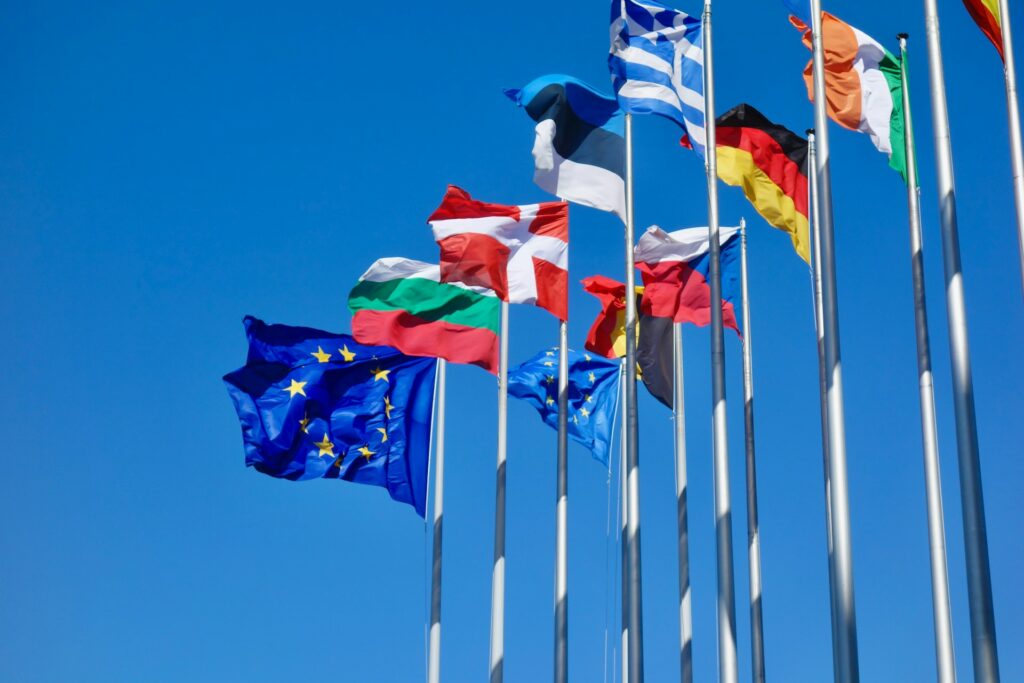While representing two conflicting worlds deadly divided ideologically, South and North Korea have confronted each other since the Korean War. The continuing Cold War structure and heavily militarized systems over the Peninsula offers a fundamental reason why a totalitarian regime in the North could last until the present, and furthermore, why it has been difficult to develop South Korean democracy to a full extent even after the democratization in 1987. The current efforts of South Korean government and civil society to build a peaceful co-existence regime therefore deserve closer attention.
A special diplomacy at Pyeongchang Olympics
Leaving behind concerns about increased tensions on the Korean Peninsula, the Pyeongchang Winter Olympics has begun on February 9, 2018. The 2018 Olympics is particularly interesting in terms of politics since it has provided a momentum for promoting a peace in the Peninsula. North Korea sent their athletes, trained supporters and art performance groups, with a highest-profile diplomatic delegation led by Kim Young-nam, North Korea’s formal head of state.
Moreover, Kim Yo-jong, the sister of Kim Jong-un, visited South Korea as a special envoy of North Korean supreme leader. She made a ‘historical’ handshake with Moon Jae-in, South Korean President, during the Opening Ceremony at the Olympic Stadium on 9 February, and had a luncheon meeting with President Moon again at the presidential palace at Seoul on 10 February 2018.
In this meeting, she delivered her brother’s letter to the South Korean President, expressing a wish of the North Korean leader to invite Moon to Pyeongyang at the “earliest date possible”. Moon responded to the invitation, “Let us make it happen by creating the necessary conditions in the future.”
What has made a change happen?
This seems a dramatic change, given that North Korea continued to proceed with their nuclear weapon program that included test launches of ICBMs (intercontinental ballistic missiles) until November 2017, and Donald Trump and Kim Jong-un exchanged insane words to threaten a total war against each other. What has brought this change in the relationship between two Koreas?
First, a change in the strategic approach of North Korea can be considered a key reason. Last year North Korea did not stop to test its nuclear armament capabilities, even facing much stronger criticisms and economic sanctions from the international community. With a confidence provided by these technological achievements, it seems to make a strategic turn.
The delegates of two sides agreed to constitute a united Team Korea and march together at the Olympics under one flag.
Kim Jong-un delivered an unexpected message in his new year’s speech that 2018 must be a turning point for improving the relation with South Korea. He even wished a success of the Pyeongchang Olympics, which offered a starting point for the negotiations between the South and North. The delegates of two sides agreed to constitute a united Team Korea and march together at the Olympics under one flag.
Besides the confidence with consolidated power position of Kim Jong-un, there is also an urgent need for Kim to reconsider his strategy. With the hardening UN sanctions against the regime, he has to find a new path for negotiating with the US.
Because Trump administration did not show a concerted will to begin a direct dialogue with North Korea despite a series of intended provocations, Kim seems to think that improving the relation with South Korea would be inevitable. What is unchanged would be that the key aim of North Korea is to gain a guarantee of the regime security by establishing a normal diplomatic relation with the US.
Expansive effects of a democratic transition in South Korea
A more fundamental reason behind the change might be found in extensive effects of so-called “candlelight civil revolution” and following democratic transitions in South Korea. To understand this dynamic, we should note that international relations and domestic politics are closely interconnected in the Korean Peninsula.
International relations and domestic politics are closely interconnected in the Korean Peninsula.
Certainly, it is a common phenomenon in many small and medium sized states that are located in borderline regions between competing powers, including Finland, having to adapt through the 20th century between the East and West. Two conservative governments in South Korea during 2008–2017 had tried to revive an authoritarian style of politics that reminded people of military dictatorship during 1970–1980s; they also adopted irrationally hawkish policy lines against North Korea, responding to North Korea’s redevelopment of nuclear arms. Established inter-Korean co-operation channels and other measures to ease military tensions were cut as a whole, including the Kaesong Industrial Complex which was shut down on February 2016.
Meanwhile, Obama administration had stuck to the so-called ‘strategic patience’ policy towards North Korea under a new strategy of ‘Pivot to Asia’, but it just resulted largely in an ineffective foreign policy lacking a real political will to resolve Korean issues. Given its nuclear negotiation with Iran and restoring a diplomatic relation with Cuba, such pointless treatment of Obama administration about Korean issues was disappointing.
In these backgrounds, North Korean matters have been developed into a real international crisis, along with the inheritance of Kim Jong-un in North Korea and the election of Trump as the 45th President of the USA.
A sudden change of South Korean government through an early presidential election can be regarded as a crucial factor that inserted a different direction of policy inputs in the domestic and international context.
What has calmed down the crisis, which caused a serious risk of breaking out a war during last year? A sudden change of South Korean government on May 2017 through an early presidential election can be regarded as a crucial factor that inserted a different direction of policy inputs in the domestic and international context. In this regard, we can say even extensive effects of participatory democratic movements in South Korea called as the ‘candlelight civil revolution’, in which more than 17 million people joined peaceful demonstrations across the country between November 2016 and March 2017. They demonstrated a strong political will calling for not only impeaching the corrupted ex-President Park Geun-hye but also transitional social and political reforms including peace-oriented, alternative approaches in dealing with the North Korean nuclear crisis.
President Moon Jae-in elected through the course has pursued a new and coherent foreign policy combining both sanctions and dialogue. He already suggested holding a new summit between two Koreas through his Berlin Declaration on August, 2017. Meeting frequently the leaders of neighboring countries and superpower leaders such as Trump, Xi Jinping, Shinzo Abe and Vladimir Putin, he has continued to persuade them, especially President Trump, that: it is necessary to strengthen the UN sanctions against the North Korean military ventures; at the same time, military options that can lead to another Korean War must be excluded while peaceful, diplomatic solutions should be pursued first and foremost.
Moon’s government has gradually restored, at least to some extent, an initiative power with maneuvering room for driving own policy lines related to the Korean Peninsula. Trump has shown, despite unstable and unpredictable characters in his style of politics, a more respecting attitude to South Korean government’s policy stance, even while exchanging dangerous words with Kim Jong-un. One measure taken in those processes was to postpone the joint military operation of South Korea and the US to after the Pyeongchang Olympics and Paralympics.
Is it possible for the third summit between two Koreas to be held in 2018?
A central question is now whether this temporary phase of peace and dialogue between two Koreas cultivated by enduring efforts of Moon government and in the wake of Pyeongchang Olympics in South Korea would lead to a long-term settlement.
It is expected that President Moon would send his special envoys soon to North Korea and the United States, as well as China, Japan and Russia, perhaps before April when the joint military operation of the US and South Korean Army postponed is assumed to restart. The most crucial aim for such diplomacy would be to get a common understanding and furthermore support for advancing inter-Korean dialogues from neighbor superpowers, especially Trump administration.
There must be many risks and barriers uneasy to pass through. Nevertheless, there is a hope now!
Mr. Moon already indicated when he received the letter from Kim Jong-un that there would be ‘necessary conditions’ to be met before his visit to Pyeongyang. A vigorous role of South Korea to facilitate the negotiation between North Korea and the US, while inducing North Korea to take meaningful measures to freeze its nuclear weapon program would be essential for future process.
It is difficult to predict the result of all these developments; there must be many risks and barriers uneasy to pass through. Nevertheless, there is a hope now! South Korean people want to see that President Moon would be able to prove his capability as the ‘negotiator’, as The Times characterized him before, and thereby open the way towards a peaceful co-existence of two Koreas.
Hyeon Su Seo is a PhD and research fellow at the Faculty of Management, University of Tampere, as well as at the Institute of Korean Political Studies, Seoul National University.





